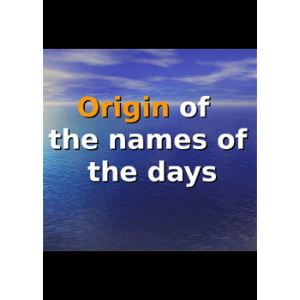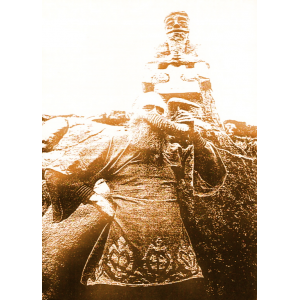
Book: The Paganism Reader by Chas Clifton
Routledge Press has a strong reputation for putting out fine scholarship and helpful editions for students, scholars, and other interested readers, as this book on Paganism, edited by Chas S. Clifton and Graham Harvey, is no exception to that tradition. This is a reader; it is not a single narrative-strand history nor is it simply a collection of works under the guise of scholarship but really saddled with an agenda. There are three primary sections, largely based on historical division - Part One introduces classical texts from the ancient world, Part Two looks at what are called `proto-revival' texts, and Part Three looks at the revival and diversification of paganism over the past century or so.
The Classical Texts draw on literature from many different cultures (British Isles, Nordic/Icelandic culture, and ancient Egypt as well as the more well-known Israel, Greece, and Rome). There was no one systematic religious framework called `paganism', as these texts indicate, but rather Paganism is a term used to cover a wide range of religious and spiritual ideas. These texts include a diversity of literary forms - autobiography, poems, narrative stories, histories, and even an epistle/letter.
The Paganism Reader is a well put together volume that provides us with material that offers inspiration, gentle teachings and insights into the very nature of our spirituality.
Mr. Clifton and Mr. Harvey have put together various works, classified by the time of their writings (classical, proto-revival, revival and diversification) that touch the heart of what it is to be pagan. The material is fresh for the most part, well chosen for content and it's appeal to the pagan reader in a variety of applications. The material can be read as individual pieces, or taken as a whole. It can be used for private meditation or as a group exercise for study.
The classical is represented by various excerpts; from the 'Book of Jeremiah' to 'Pliny the Elder' and material from the 'Irish Cycles' to Geoffrey of Monmouth. The material covers a wide range of myths and mysticism.
The proto-revival material is characterized by excerpts from "Aradia',
Aleister Crowley's 'The Book of the Law', Margaret Murray on 'Witchcraft' and Rudyard Kipling's 'A Tree Song', to name a few.
Revival and diversification contains material selected from the writings of Doreen Valiente, Gerald Gardner, Robert Heinlein, Marion Bradley, Mr. Clifton and others. There is also a 'Further Reading' list that is quite in depth and a well thought out Index.
The material presented is as diverse as the many paths of paganism. The book offers to the general pagan some wonderful material that will provoke discussion as well as contemplation.
A must have book on your library shelf, it should be included in your 'must read' lists and is a very useful tool for any teacher, as well as a book I would consider a primer for anyone looking at the pagan path.
The proto-revival texts include texts that reawaken to a celebration of the natural world and the spirituality inherent in it during the eighteenth and nineteenth centuries. Again, the motivations are diverse (Romantic views of nature, a disillusionment with progress and urbanism, etc.) as well as the types of literature - included here pieces from Rudyard Kipling, Robert Graves, Aleister Crowley and Kenneth Grahame, among others. There is also the entry written by Margaret Murray for the 1929 edition of the Encyclopedia Britannica on witchcraft, a rather sympathetic account of the history of witchcraft, making it something very different than it is popularly envisioned.
The third part explores
twentieth century scholarship as well as works written by and for Pagans. Some of the tensions that exist in the diversity that is Paganism have to do with the emphasis on nature versus the emphasis on the self and personal reflection/discovery. Another tension has to do with hierarchy - are there those with power and position or not? Among the many titles given to Pagans today are Witches, Druids, Shamans, Eco-activists, Goddess worshippers, and several others. Magic sometimes plays a role, but not always. Paganism is far from the kind of devil worship sometimes portrayed by church hiearchs.
In the introduction, Clifton and Harvey clearly state that it is not the intention of this collection to steer the reader in any particular direction regarding this texts; to that end, the introduction is but a few pages long, and the list of further readings is quite generous at the end of the book. Clifton does contribute a few articles in Part Three, on nature religion and Western shamanism.
Suggested ebooks:
Howard Phillips Lovecraft - The Green Meadow
Harold Macgrath - The Pagan Madonna
Arlo Bates - The Pagans







